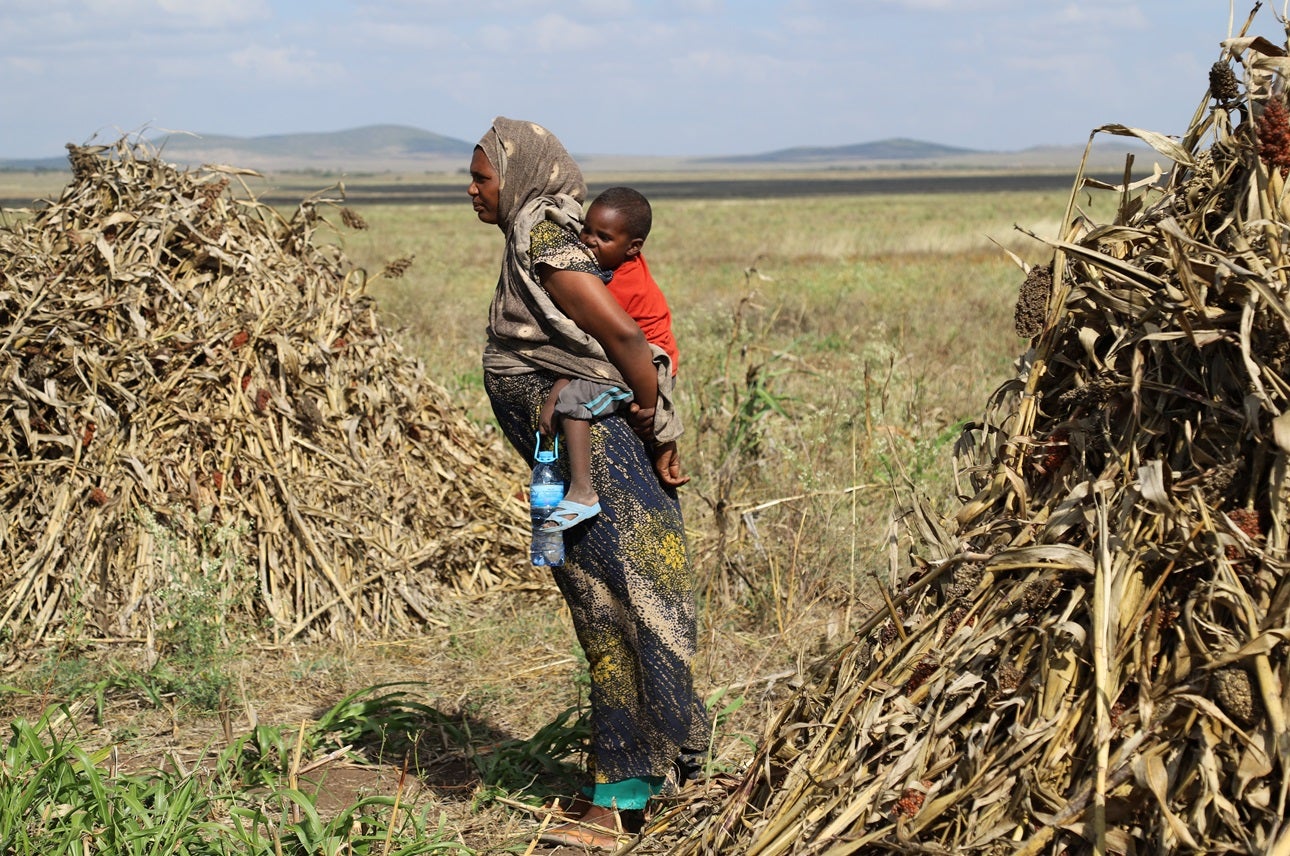On the table at the UN Food Systems Pre-Summit: agricultural productivity and stunting
Research on Kyrgyz Republic, Peru and Ethiopia illustrate how agricultural productivity is necessary but insufficient for stunting reduction

As leaders gather both in-person and virtually for the United Nations Food Systems Pre-Summit in Rome this week to discuss how to leverage the power of food systems to deliver progress on all 17 Sustainable Development Goals (SDGs), it is worth examining how agricultural productivity can serve as a powerful driver to reduce stunting.
Research on Kyrgyz Republic and Ethiopia demonstrate how agricultural gains can serve as a critical foundation for historic reductions in stunting. In both countries, government agricultural support and reforms helped farmers improve productivity; thereafter, a wide variety of other programs (including education, health, sanitation, and women’s empowerment) built upon this foundation to deliver remarkable stunting reduction.
At the time Kyrgyz Republic gained its independence in 1991, about 500 massive state-run collective farms controlled about 98 percent of the arable land in the country. As the Soviet Union broke apart, these farms collapsed. In 1994, following advice from the World Bank and other donors, the Kyrgyz Republic government launched an ambitious land reform program, dismantling collective farms and distributing small plots to more than 200,000 families, largely former members of the collective. These families initially focused on subsistence food production and gradually expanded to cash crops, which helped reduce stunting through increased food security, increased income, and poverty reduction.
According to the World Bank, this sequence of events – “sweeping land reform and subsequent accumulation of livestock assets by peasant farms, along with their increasing commercial orientation” – was responsible for rapid overall agricultural growth, rural poverty reduction, and increased food security.
By 2006, stunting prevalence had fallen to 18 percent, down from 36 percent in 1997. Similarly, rural poverty was cut in half between 1998 and 2008.
Exemplars’ analysis of Ethiopia likewise demonstrates the power of agriculture to produce a strong foundation for reductions in stunting. Ethiopian government investments in 70,000 agricultural extension workers (who connected farmers with high-quality fertilizer, improved seeds, and up-to-date farming practices), helped agricultural productivity skyrocket beginning in the early 1990s.
Then, in 2003, Ethiopia embarked on an ambitious land certification program that provided documentation of land rights for more than 20 million plots of farmland – strengthening land rights for farmers, especially women farmers, whose names were now included on most certificates. Researchers have found that “crop productivity improved significantly after land certification.”
Later, in 2010, the government launched the Agricultural Transformation Authority (ATA), which focuses on system-wide innovations such as mapping soil and water resources, scaling up seed production, and running a hotline for farmers. The 8028 Farmer Hotline initially provided farmers who called in with up-to-date advice in their local language and tailored to their agro-ecological circumstances. The hotline now also proactively sends SMS messages to farmers to warn about extreme weather, pests, and diseases. Over the past four years, for example, the 8028 Farmer Hotline has broadcast more than two million alerts including messages on the occurrence of and treatment for Wheat Rust, Maize Necrosis Lethal Disease, Fall Army Worm. The messages are tailored to the farmers’ crop, geography and altitude, based on demographic information collected when farmers first register to use the system.
As a result of these policies and interventions, Ethiopia’s cereal output more than doubled from 974 kg per hectare in 1993 to 2,538 kg per hectare in 2017. And its crop production index more than tripled. This provided a foundation for a reduction in stunting prevalence from 69 percent in 1992 to 37 percent in 2019.
As critical as food security is to reducing stunting – as Ethiopia and Kyrgyz Republic make clear – food security does not automatically deliver reductions in stunting. Exemplars research in Ethiopia and Kyrgyz Republic found that the countries’ remarkable gains in agriculture might not have led to a reduction in stunting, if not for a wider array of programs, policies, and initiatives. Agricultural productivity, it turns out, serves as a necessary but insufficient foundation for stunting reduction.
In this respect, stunting is perhaps one of the best illustrations of the interconnected nature of the 17 Sustainable Development Goals.
Stunting is multifactorial. However, until relatively recently, the world's approach to it had been the opposite. Up until just a few decades ago, many countries considered their agriculture policy to be their nutrition policy. They were one in the same. The assumption was that if food was abundant, children would be well-nourished. Indeed, this was the foundational strategy of the green revolution in agriculture.
Today, experts understand that addressing stunting requires not just producing “enough” food; it also requires women’s empowerment and education, access to health care, and WASH improvements, among others.
And therein lies the problem. In public health there is a saying, “nutrition is everyone’s business and no one’s responsibility.”
Peru countered this unfortunate truism and cut its stunting rate from 37 percent to 12 percent between 1991 and 2018.
On the table at the Food Systems Pre-Summit: "Agricultural productivity and stunting. What research in Ethiopia, Kyrgyz Republic, and Peru tell us about ag productivity and stunting." Milo Stanojevich, the former director of CARE Peru explained, “One of the key learnings is that this is a multi-causal problem. If we are going to address it at a national level, we need to look at it as a multi-sectoral approach. We need to engage different parts of government both horizontally, in terms of different programs and ministries, but also vertically, with different levels of government.”
To develop and implement an effective response to stunting, Peru forged partnerships and structures for collaboration across ministries of education, public works, agriculture, health, and sanitation, and across all levels of government. Collaboration of this sort, across ministries, is challenging, critical, and has rarely been governments’ strong suit. But in the case of Peru, it has proven fundamental to ensure nutrition become everyone's business. And responsibility.
